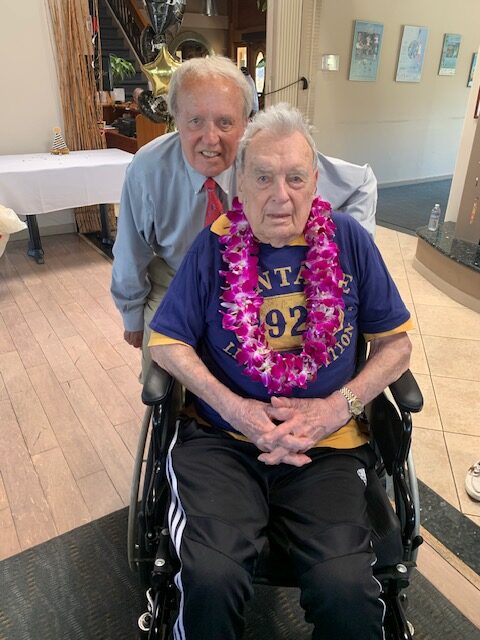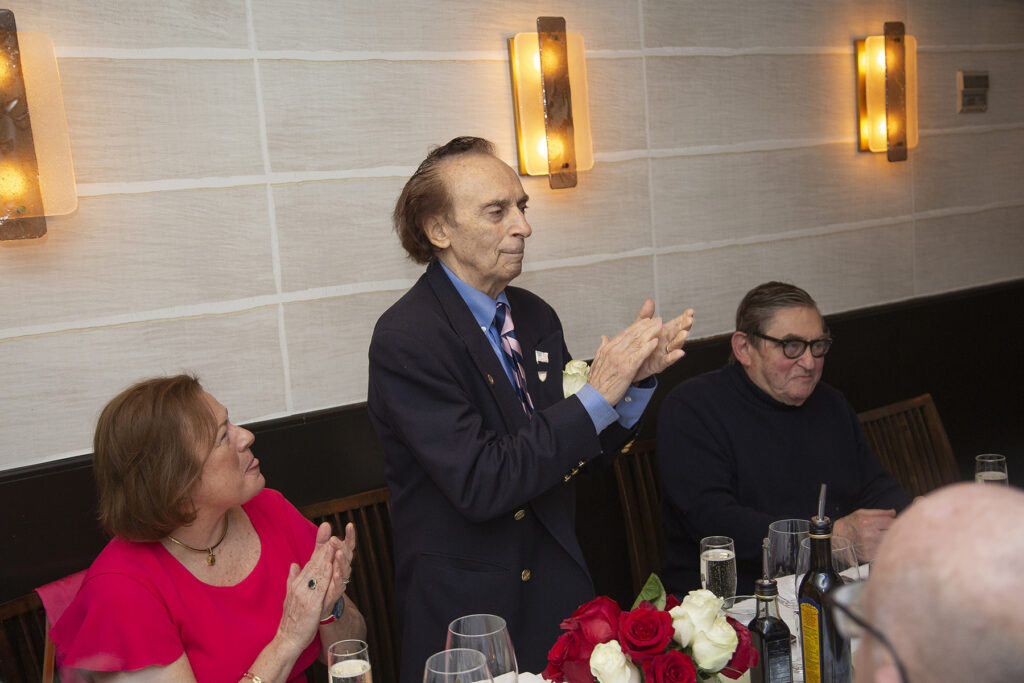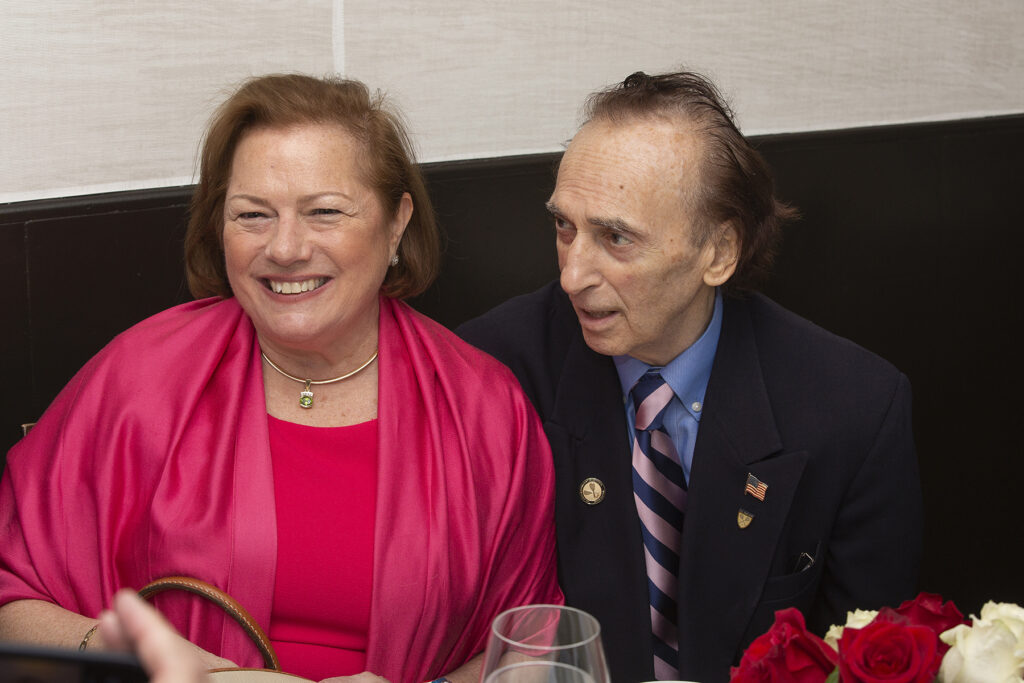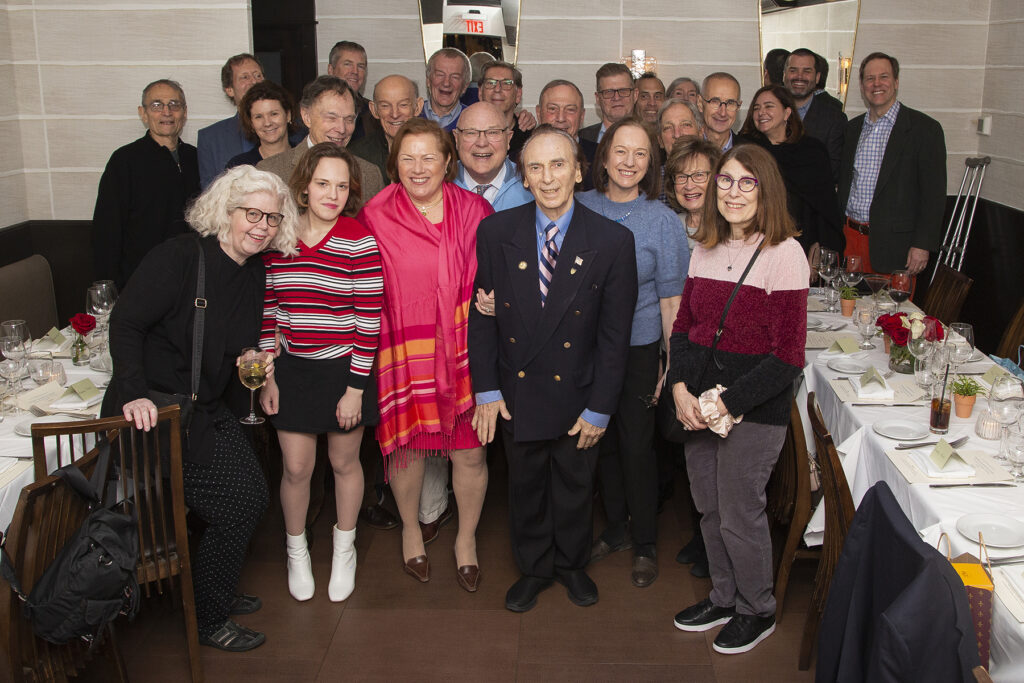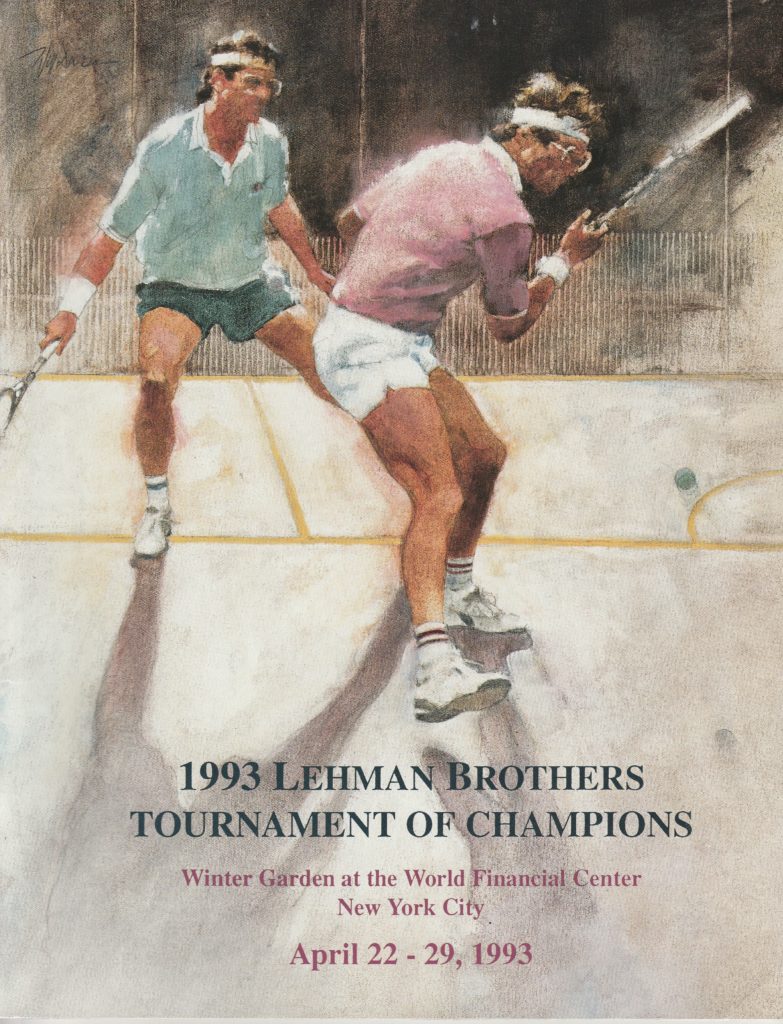A follow-up about Vic Seixas. A few days after Vic’s 100th birthday, I got a wonderful message from Walter Oehrlein.
Walter, like Vic, is a great athlete in both tennis and squash. While at West Point, he won the 1965 National Intercollegiates in squash; in tennis, Walter won his first round match at Forest Hills in the 1966 U.S. Championships for tennis and in 1967 he lost in a first-round five-setter. For years Walter coached squash and tennis at the Birmingham Athletic Club in Detroit.
He first met Vic in the 1960s at a squash tournament. In June 1973 Walter invited Vic to put on a tennis exhibition at Birmingham. Serving first in the match, Walter pulled out a squash ball and hit that rather than a tennis ball.
They stayed in touch. Vic arranged for Walter to look at becoming a head pro at Greenbrier, the West Virginia resort where Vic had long been the resident tennis director (Walter decided to stay in Detroit). A few years later, Walter and Vic did a squash exhibition at Regency, the fitness club outside of Washington, DC.
They resumed their friendship in February 2021. The death of Tony Trabert, one of Vic’s Davis Cup teammates and a fellow Grand Slam champion, triggered a condolence phone call that Walter placed to Vic. At the end of the call, Vic said, “Let’s talk more.” So a few weeks later Walter called again and soon they were talking regularly, reminiscing about squash and tennis days of yore.
This year Vic’s daughter Victoria invited Walter to come out to San Francisco to celebrate Vic’s 100th birthday at the end of August: two old stalwarts after sixty years of friendship on and off the court.
